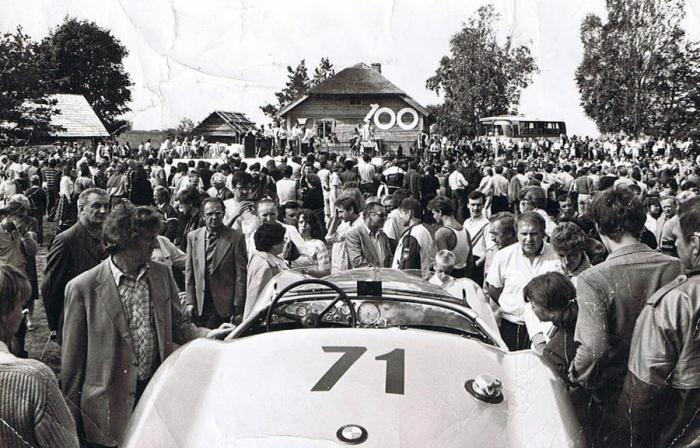Car racing is very popular in westerncountries. Manufacturing firms traditionally invest part of their profits in order to demonstrate their technological capabilities, and prizes serve as the best advertising for well-known brands.

Such a profession as a speed designercars in the USSR did not exist. There was no need for such spectacular competitions, the mass consumer was constantly in cramped conditions. When the cars were sold freely, the population did not have the money, and as soon as the necessary funds came from some of the people, cars disappeared somewhere, despite the constant growth of their production. And yet enthusiasts were.
The first record car Agitova

Yevgeny Agitov, the first designer of speedcars in the USSR, decided to create a car that, no less, could break a record. The design office of the Gorky Automobile Plant in 1938 was headed by Andrei Lipgart, he strongly supported this initiative. As a result of the hard work of two talented engineers, a miracle came to light, called a record car, since there was no point in organizing a race due to the absence of worthy rivals. The official GAZ-GL1 index stands for "Lipgart Racing." Agitov not objected.
The basis for the creation of the car was the serialproduced "Emka" GAZ-M1, but with significant design changes. Initially, the engine was forced by adding 15 "horses" by increasing the working volume, and then it was replaced with a more powerful one. Externally, the car was completely different, its aerodynamics, it resembled the fuselage of the aircraft. The speed reached almost 168 km / h, which, of course, was a good result, but not a record. In 1940, the GL-1 was dismantled in the hope of doing something better, but the war soon began, and it was not up to the sport.

Our “Star” Peltzer is the fastest!
After the Victory in the USSR, trophies began to arrive,including samples of the former enemy technology. This circumstance was successfully used by Alexander Peltzer, another designer of high-speed cars. In the USSR, on the basis of the engine from a sports motorcycle of the DKW company, the car “Star” was built. This happened in 1946 in the central design bureau of Glavmotoveloprom, created at that time, which was later renamed NAMI. The German motor was later replaced by the domestic one, and in five years the Zvezda-M-NAMI set nine world speed records in different categories. This achievement was facilitated by the ability to quickly replace the engine with another, with a volume of from 250 to 500 cubic meters. cm. The car accelerated to 215 km / h (at 350 "cubes").
"Kharkov" designer Lorenta

In the 50s, when our country enteredFIA international auto federation, proved himself Edward Osipovich Lorent, a talented designer of high-speed cars. In the USSR and beyond its borders, this name became famous in 1960, when it, at the car itself, built with his own “Kharkiv-L2”, accelerated to 286 km / h from a kilometer course, which is still considered an unsurpassed achievement.
Son of Lorenta Valery, also a designercars, the "L-2" broke several international records and created other samples of high-speed vehicles, such as "Kharkov-L3" "Kharkiv-L4" (formula class).
"Golden Age" of Soviet fireballs
The sixties and seventies became the "golden age"Soviet racing cars built in the factory. Excellent results were shown in 1976-1978 by the BPS-Estonia race car, driven by V. Barkovsky, his designer. The USSR once again demonstrated its technological capabilities to the world. True, in single copies ...









